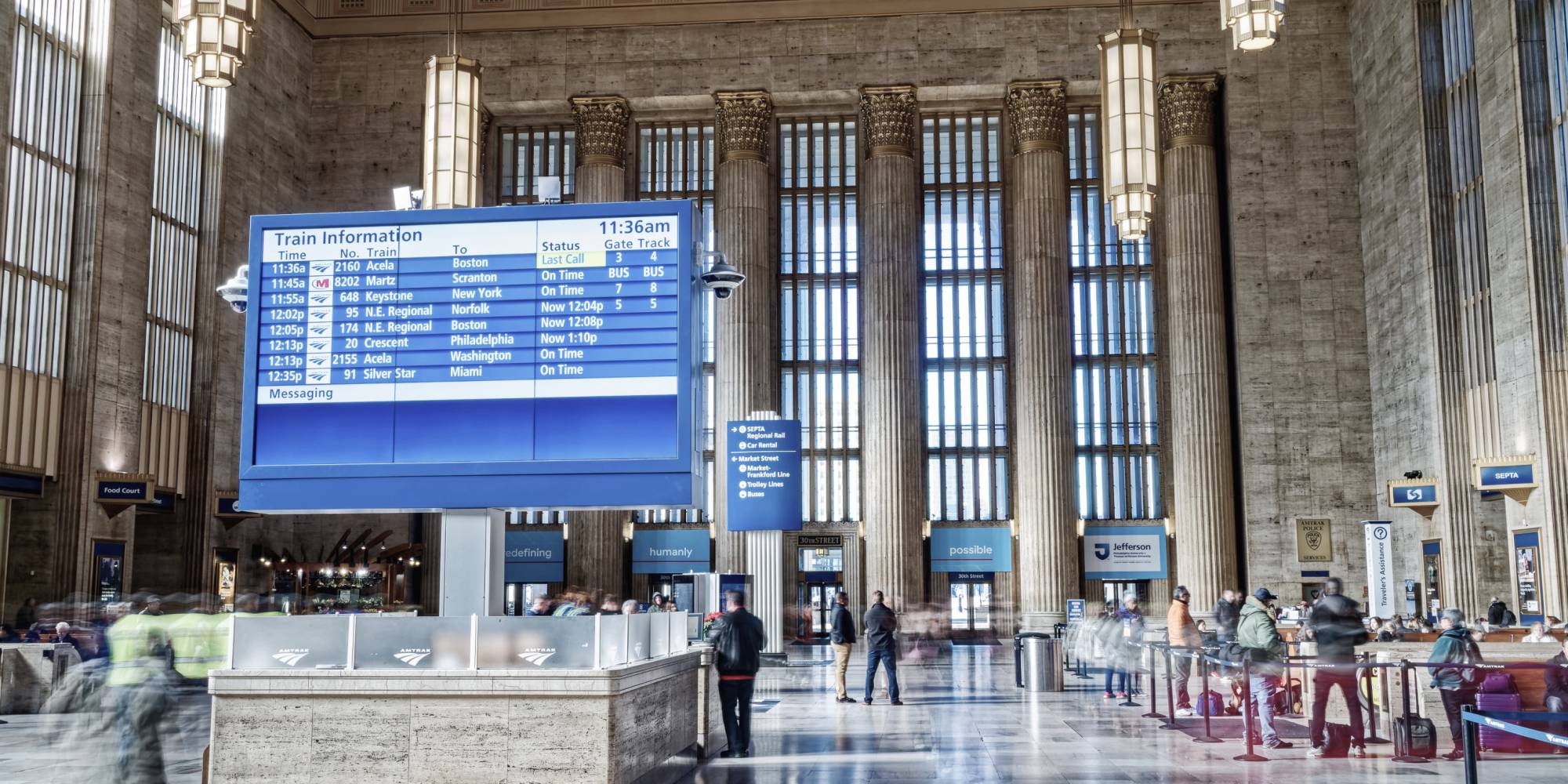30th Street Station Passenger Information Display System

Award Winning Project
GBCA – Electrical Construction Project of the Year
NECA PDJ – Design Build Project


Carr & Duff was selected as the prime contractor for the installation of a new Passenger Information Display System throughout Amtrak’s William H. Gray III 30th Street Station in Philadelphia, PA. C&D provided the installation of all required power & communication equipment, raceways, cabling, and teamed up with International Display Systems to furnish the system components and commissioning services. Work was performed throughout the entire station including the Acela Lounge, concourse, platforms, and sub-platform levels. Work commenced with the installation of head end communication and power equipment to provide all the power and data needs of the new system and tied into Amtrak’s existing network on the 4th floor.
The existing system was required to be kept operational during installation of the new system as daily activities for Amtrak, SEPTA, NJ Transit and their customers could not be interrupted during construction. The notable station is on the US National Register of Historical Places and is a recipient of a PA State Historical Marker. Aside from performing installations that conform to retaining of the historical attributes of the landmark, the intermodal station is one of the busiest in the United States. It is the Philadelphia metropolitan area’s main railroad station, and a major stop on Amtrak’s Northeast and Keystone corridors. It also is a major commuter rail station serviced by all Southeastern Pennsylvania Transportation Authority (SEPTA) Regional Rail lines as well as is the western terminus for NJ Transit’s Atlantic City Line. It is also served by several SEPTA city and suburban bus routes, as well as NJ Transit and intercity bus operators. The station serves on average more than 4 million inter-city rail passengers a year, and is Amtrak’s third busiest station behind only Penn Station (NYC) and Union Station (DC).
C&D crews installed more than 25,000 ft of raceway, which was predominately galvanized rigid conduit, throughout the station to provide power and data connections from the head end equipment to all of the new signage and speaker locations. This work included installation of: 400 ft of 24” aluminum ladder tray; 3,000 ft of EMT sized 1” to 3”; 22,000 ft of galvanized rigid conduit sized ¾” to 2 ½”, 13,000 ft of multiconductor MC cable ranging from #2 to #6; 5,500 ft of 2” plastic innerduct; 1,800 ft of sealtite; 21,000 ft of THHN; 62,000 ft of plenum rated Cat6; 16,000 ft of 18-8 POE cable; 11 – 48 port patch panels; 400 ft of 2” Maxcell fabric innerduct; 11,000 ft of 12 strand single mode fiber; 450 ft of 48 strand single mode fiber; 67,000 ft of 14/2 and 16/2 speaker wire; 45 – 12” stainless steel junction boxes; 55 – 12” galvanized junctions boxes; 5 – 36” stainless steel junction boxes; a voltserver; and 5 – GPON units in air conditioned enclosures.
In addition to the raceway and cabling, the concourse level included installing ten column boards consisting of three 55” LCD monitors per column board; six floor mounted enclosures with train information consisting of three 48” LCD monitors per enclosure; two workstations for modification of train information; six large speaker arrays; and 36 ceiling speakers to provide train information to customers throughout the concourse level.
Additionally, C&D installed a total of 18 – 55” monitor video wall modifying the existing framing of the renowned Solari “flipper” board for the retrofit installation. All raceway for this signage had to be run above the concourse ceiling or on the track level ceiling below. Distribution of power and communication conduits to each of the five platforms occurred in the sub platform tunnels that connect the platforms. The Acela lounge installation consisted of four ceiling hung 48” monitors and enclosures as well as 10 recessed ceiling speakers. On the platform level, C&D installed 75 Daktronics ceiling hung information signs with reinforced unistrut mounting, and installed 500 speakers across five platforms working closely with Amtrak’s Electrical Traction team to coordinate track outages for safe installation of the raceway and equipment.
The original design consisted of fiber runs to each monitor location with splice enclosures and patch panels to land Cat6 data at each monitor. The project took many years to design, but by the time construction started, Amtrak had a desire to incorporate their latest technology into the project with the communications distribution updated with an installation of a GPON and Volt Server system. C&D provided design-assist, working closely with Jacobs Engineering and Amtrak IT in order to keep the project on schedule while amending the design ‘on-the-fly’ to incorporate these new technologies by adjusting conduit sizes, power output, conduit routing and layout to meet the requirements of the new system.



